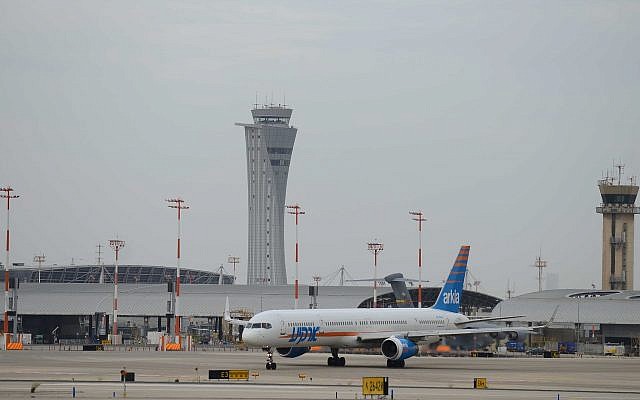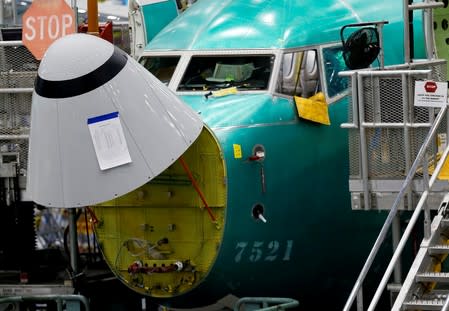Airlines' dirty secret: Air quality is terrible inside
airplanes
Flight attendants, passengers and flight crew often
breathe toxic fumes - and the airlines are in denial
Flight attendants,
pilots and the traveling public have complained for decades about health effects
that they attribute to poor air quality in the aircraft cabin. Yet despite years
of highlighting potential risks to air safety from toxic fumes, airline labor
unions and airline safety advocates believe the aviation industry remains
reluctant to address their concerns.
John Samuelsen, the president of the
Transport Workers Union of America, a labor organization that represents over
17,000 flight attendants across the United States, characterized the problem as
the "dirty little secret" of the airline industry.
Samuelsen told Salon
that while this is issue is by no means new, airline labor unions have struggled
to convince airlines to take their concerns seriously. (He noted TWU represents
flight attendants at Southwest Airlines, JetBlue and Allegiant
Air.)
Samuelsen explained that the air individuals breathe on commercial
airplanes is a combination of recycled air within the cabin (that passengers and
crew inhale and exhale), along with outside air that has been compressed by the
aircraft's engines, known as "bleed air."
For decades, aircrafts have
relied on bleed air for a range of purposes - from cabin pressurization to
anti-icing to air conditioning and starting the engine - but if a seal inside
the engine leaks, bleed air can mix with cabin air and can cause toxic fumes to
leak into the cabin. Most passengers expect bleed air to be heavily filtered,
but Samuelsen said that's often not the case.
"There's always a
potential. . . that flight attendants, passengers or the flight crew are
breathing in chemicals and things that can make you very sick - even
carcinogens," Samuelsen said in reference to bleed air.
He claimed that
while airlines are in "absolute denial" over problems with air quality, his
union's concerns have managed to capture the attention of members of Congress,
who responded by introducing a measure called the Cabin Air Safety Act to tackle
the issue.
The legislation, introduced in the Senate by Sen. Richard
Blumenthal, D-Conn., and in the House of Representatives by Rep. John Garamendi,
D-Calif., would require commercial aircrafts to install, operate and constantly
monitor carbon monoxide detectors during flights. It would also require flight
attendants, pilots, aircraft technicians and first responders to undergo
training at least once a year on how to identify and respond to incidents
involving toxic fumes on aircrafts involving smoke or fumes.
The bill
would direct the Federal Aviation Administration (FAA) to develop a standardized
system for flight attendants and other airline crew to report incidents of smoke
or fumes on board a commercial aircraft. Investigators would have to take place
no more than seven days after an incident is reported to identify "any replaced,
worn, missing, failed or improperly serviced components," according to a draft
of the legislation. The agency would also be required to publish the data
collected every three months on a public website.
"This legislation can
protect the flying public and airline crews by ensuring the cabin air they
breathe during flights is safe - free from any hidden and toxic fumes," said
Blumenthal, who is a member of the Senate Commerce, Science and Transportation
Committee.
Samuelsen said the bill is "designed to compel operations like
Southwest Airlines to pump air into the cabins that's chemical-free and
carcinogen free."
Despite concerns by passengers and crews, the FAA told
Congress in 2015 that the "risk for these issues" is "extremely low."
It
remains unclear how often these toxic fume events occur. The FAA has said toxic
fume events are extremely rare, while the Allied Pilots Association (APA), which
represents approximately 15,000 pilots at American Airlines, has said
approximately 20,000 fume events have occurred over the past decade - an average
of five per day. This disparity may result from a lack of uniform reporting
procedures among various carriers.
The issue has prompted four flight
attendants, all of whom work for Alaska Airlines, to file two lawsuits against
Boeing Co. because of "devastating health effects" from what they allege was
exposure to toxic fumes on flights.
Though most pilots, flight attendants
and travelers will never experience a serious fume event, airline labor unions
believe the potential threats are too serious to ignore.
"This should be
a no brainer," Samuelsen said. "The current system that exists across the board
in this industry is that the air quality of planes is completely horrific."

 United States of America
United States of America



















